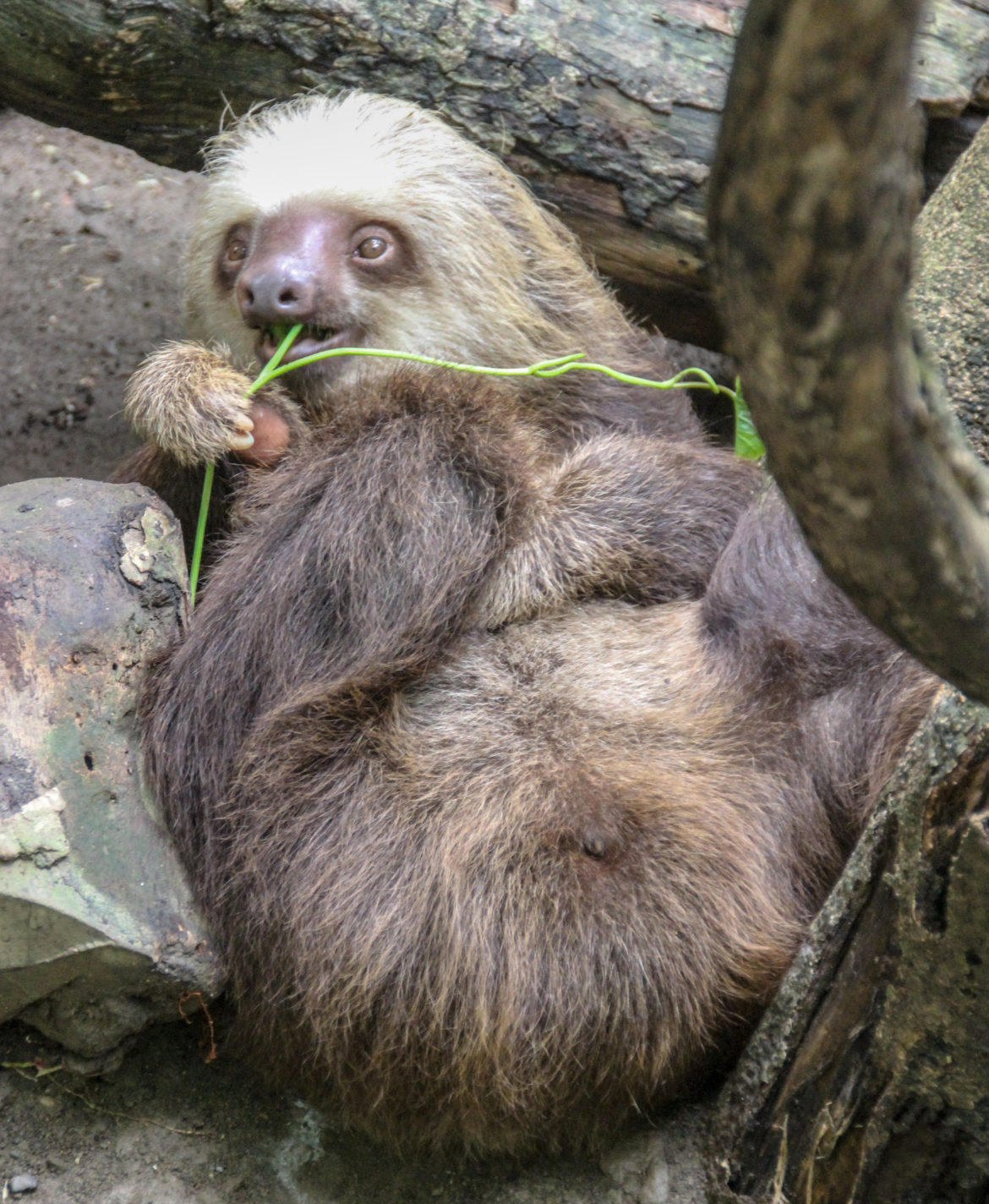Costa Rica’s Wildlife Rescue missions give tourists opportunities to get up close and personal with rescued animals. In the Costa Rican-Caribbean region, there is a haven for animal lovers called the Jaguar Rescue Center, established in 2008. However, we did not see a jaguar, as the name comes from the founders, who honored one of their first animals rescued, a baby jaguar that died. Also, jaguars are one of the most hunted, endangered animals in the Americas, and symbolic of the growing number of extinctions on our planet.
This center rehabilitates wild animals that are ill, injured or orphaned, and then reintroduces them back to their natural habitats, usually in the Le Ceiba Primary Forest. It’s a transitional animal center. However, if an animal is unable to be rehabilitated, it stays as a permanent resident.
Costa Rica’s Jaguar Rescue Center Tours with Amazing Variety of Wildlife
From 2008-15, the center has rehabilitated and released more than 1200 animals back into their natural environments. Their staff includes veterinarians, caregivers, volunteers and staff. At all times there are 120-200 temporary or permanent animal residents. Examples of the different animals cared for are the following: sloths, anteaters (see right photo), armadillos, primates, wildcats; birds, reptiles and snakes. Many of the injuries are from car accidents, electrocution, dog attacks and hunting. The wildcats (margay, ocelot, jaguar and puma) are confiscated from illegal trafficking.
I enjoyed a 2-hour tour, guided by a volunteer from the U.S. Our guide’s background is like many, in that 6 years ago she had come to volunteer for a couple months after graduating from college. She intended to go back and get that “real job,” but just stayed in Costa Rica at the center because she loved it so much. That was part of the charm here, in that the staff seemed just as happy to be there as the animals. It was one big happy family.
The space is relatively small, creating a maze with surprises around each corner. At the entrance there was a small, green patch of grass with a parrot, wild pig and a howler monkey hanging out like they were best friends. The monkey was antagonizing the pig and the parrot was screeching at them. That was the other thing that struck me about the vibe of this place, the inter-species interaction was so genuine and fun loving to watch. Where else do you get a chance to see this so intimately? Behind it there was a small, fenced in area with a baby caiman all alone opening its mouth at me, probably thinking I had lunch…
Sloth Area at Rescue Center
We made our way to the sloth area. Some resided in cages and others hanged out in the small trees or sprawled on boulders. Our guide said many of the sloths are brought to the sanctuary because they are electrocuted by wires. Some are beyond rehabilitation and will live out their lives at the center. Sloths live in the tree canopies and only come down once/week to defecate. If their baby falls to the ground, sloths will not risk their own life and will leave the baby on the ground. Therefore, the center is home to baby sloths rescued for development.

We saw many animals in cages, such as, ocelots, snakes, rabbits, birds, and turtles. There was a toucan on its own outside on a small tree. They are a quite shy species, so I kept my distance and admired its colors. There was an anteater meandering throughout the center, sniffing the ground for ants. The guide picked up the anteater, like it was a puppy, and moved it to a more appropriate area.
Costa Rica’s High Frog Diversity
Surprisingly, I saw my first red-eyed tree frog on a big tropical leaf. It conspicuously stands on its red legs with red eyes wide open. This is unlikely, because they usually camouflage in the day by sitting on their red legs and closing eyes with their green eyelids, blending into the leaf. Costa Rica has some of the most frog-diverse regions in the world, so exploring frog species can always be a part of whatever you do in Costa Rica.
Volunteer Opportunities at Jaguar Rescue Center
Our tour was all over too soon. I really hope to return to the Jaguar Rescue Center soon, maybe as a Volunteer. The center offers 1-month volunteering opportunities with lodging right next door at the Jaguar Inn (a hostel for $20/night). Who knows, maybe like our tour guide, I would potentially stay and volunteer for even longer.
Read More!
Costa Rica’s Ecotourism at the Pristine Veragua Rainforest
White Water Rafting & Capsizing in Costa Rica’s Pacuare River





